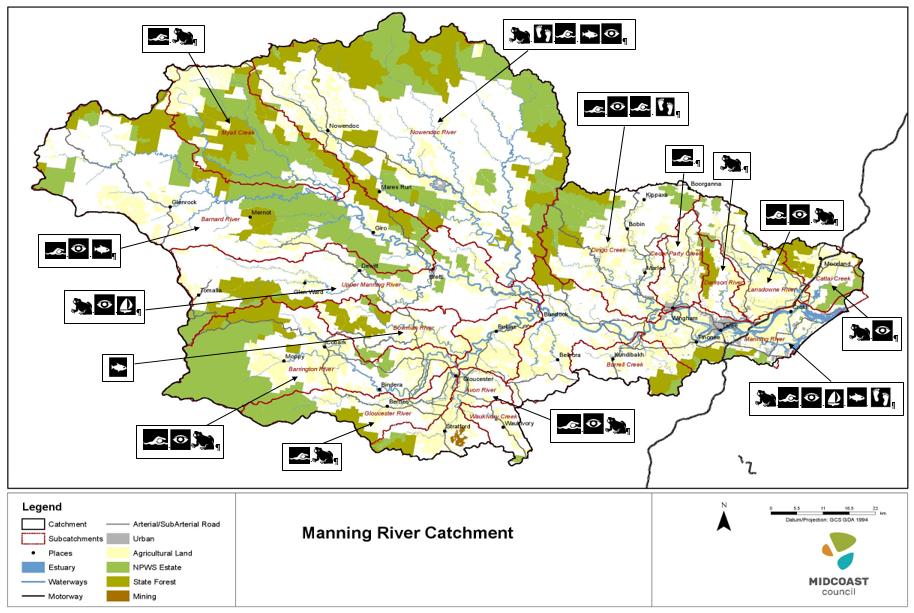Figure 14: Program Logic Model
GOAL
“The Manning River, its tributaries and the estuary give life to our community connecting the mountains to the sea. Together w manage the catchment holistically and respond to a changing climate - safeguarding environmental, social, cultural and economic values.”
ULITIMATE OUTCOMES 50years
Manning catchment, river, estuary and marine receiving waters are healthy and resilient.
INTERMEDIATE OUTCOMES 10years (2030)
Improved land management practices reduce pressures on ecosystem health and resilience
SHORT-TERM OUTCOMES 5years (2025)
Evidence-based science informs ongoing management of the catchment and estuary.
ACTIVITIES
ACTIVITIES
FOUNDATION ACTIVITIES
WQ and Ecosystem Health actions Biodiversity actions Land-use Planning actions WQ & Ecosystem Health MER
Science program
Literature review, gap analysis, Threat and risk assessment Issue analysis
Manning River ECMP Exhibition Draft V2 June 2021
The connection between river ecosystem health, a sustainable economy and a healthy community is widely understood, valued and supported
The community adopts sustainable behaviours and best practice for land and water management Improved community understanding and commitment to catchment values, function and stewardship. Stewardship program in place. Stewardship actions Aboriginal Custodianship actions Economic and Social Values actions Stakeholder engagement
Confirm strategic direction
Stakeholder analysis Engagement Strategy
Cohesive NRM management, continuous improvement and partnerships are “business as usual” in the Manning catchment. CMP is implemented with strong partnerships between responsible agencies.
M&E provides feedback and learning
Governance actions ECMP Monitoring, Evaluation and Reporting (MER)
Establish project team and governance Page 39






















